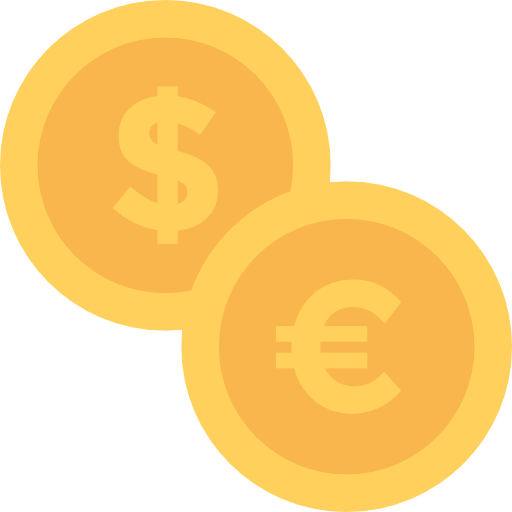Cracking the Code: Deciphering Pool Table Patterns for Strategic Advantage
You step up to the pool table, cue in hand, ready to conquer the game.
But to truly master the art of pool, you must go beyond basic shots and learn to read the rack of slate pool tables for sale.
In this article, you will delve into the expert tips and techniques for analyzing patterns on the convertible pool table.
By understanding the importance of pattern analysis and developing a tactical approach, you will unlock the secrets to achieving true mastery in the game of pool.
Understanding the Importance of Pattern Analysis
Understanding the importance of pattern analysis can greatly improve your skills on the pool table.
When it comes to playing billiards on the Playcraft pool table, the ability to recognize and analyze patterns can give you a significant advantage over your opponents.
By understanding the underlying patterns on the American Heritage billiards table, you can make better decisions, plan your shots more effectively, and increase your chances of success.
This is why pattern analysis is considered one of the most crucial aspects of mastering the game.
In order to excel at pattern analysis, it's essential to develop a keen eye for detail while playing on the Vision Outdoor Pool Table.
Pay close attention to the layout of the balls on the Gameroom Concepts Tuscany 8ft Outdoor Pool Table and identify any recurring patterns or clusters.
By doing so, you can predict the likely paths of the balls and plan your shots accordingly.
This skill is especially valuable in games like 9-ball or 8-ball, where the order in which you pocket the balls is critical.
Additionally, pattern analysis allows you to anticipate the movements of the cue ball on the Imperial 8ft Outdoor Pool Table.
By understanding how the balls interact with each other, you can position the cue ball in advantageous locations for your next shot.
This strategic positioning is essential for setting up your shots and maximizing your chances of sinking the target ball inside the pockets of the Playcraft Willow Bend Slate Pool Table.
To further enhance your pattern analysis skills, it's important to study and learn from experts in the game.
Watch professional matches, read books and articles on billiard tips and tricks, and seek guidance from experienced players.
By immersing yourself in the world of pool playing tips, you can gain valuable insights and techniques that will help you become a master at analyzing patterns on the table.
Identifying Key Ball Positions for Successful Shots
Developing a keen eye for detail and paying close attention to the layout of the balls on the table can greatly improve your ability to identify key ball positions for successful shots on the pool table.
This skill is essential for mastering the game and can greatly enhance your overall performance.
To effectively identify key ball positions, it's important to analyze the angles, distances, and potential paths of the balls.
One of the first steps in identifying key ball positions is to assess the position of the cue ball in relation to the other balls.
By understanding the current position of the cue ball, you can determine the best angle and power needed for your shot.
This will allow you to plan your next move strategically.
Next, observe the position of the target ball or the ball you intend to hit. Consider its proximity to other balls and any potential obstacles in its path.
By analyzing the position of the target ball, you can determine the best approach to pocket it.
Additionally, take note of the positions of other balls on the table. They can act as potential aids or hindrances to your shot.
By understanding their positions, you can plan shots that utilize them as bumpers or blockers.
Lastly, consider the overall pattern and layout of the balls on the table.
By recognizing patterns and clusters, you can identify strategic opportunities for making multiple shots or breaking up challenging formations.
Analyzing the Break: Strategies for Maximum Impact
To achieve maximum impact during the break, you should focus on targeting specific areas of the rack and applying controlled power to generate optimal scatter.
Analyzing the break is a crucial skill in billiards, as it sets the stage for the rest of the game.
Here are three strategies to help you achieve maximum impact during the break:
Position the Cue Ball
Before making your break shot, carefully position the cue ball. Aim to strike the head ball, which is the front ball of the rack.
By hitting the head ball directly, you increase your chances of creating a powerful break and scattering the balls effectively.
Controlled Power
While power is important in the break, it's essential to maintain control.
Avoid using excessive force, as it can result in the cue ball jumping off the table or the balls spreading too widely.
Instead, focus on a controlled power that allows for optimal scatter and provides you with a favorable starting position for your next shot.
Target Specific Areas
Aim to target specific areas of the rack during the break.
By focusing on these areas, you increase your chances of sinking balls and gaining an advantageous position on the table.
The corners and sides of the rack are often good targets, as they can lead to balls sinking into pockets or creating opportunities for subsequent shots.
Mastering the break is just the beginning of your journey to becoming a skilled billiards player. The next crucial skill to develop is cue ball control.
By mastering cue ball control, you can effectively analyze patterns on the table and plan your shots strategically.
Let's delve into this crucial skill in the next section.
Mastering Cue Ball Control: A Crucial Skill for Pattern Analysis
To truly master cue ball control, you must practice consistently and focus on precision. Cue ball control is an essential skill for analyzing patterns on the pool table.
It allows you to position the cue ball exactly where you want it to be, giving you the best possible shot at sinking your target ball.
Achieving mastery in cue ball control requires a deep understanding of the physics of the game and the ability to apply that knowledge in real-time.
One of the key aspects of cue ball control is understanding the concept of angle and speed.
By adjusting the angle at which you strike the cue ball and the amount of force you apply, you can control the path of the cue ball after the hit.
This allows you to set up your next shot with precision and accuracy.
It's crucial to study and practice different shots to develop a feel for how the cue ball will react in different situations.
Another important skill in cue ball control is the ability to use spin or English on the cue ball.
By applying side spin, top spin, or backspin, you can alter the trajectory and behavior of the cue ball after it makes contact with an object ball.
This skill is particularly useful when you need to navigate around obstacles or when you want to position the cue ball for your next shot.
Consistency is key when it comes to mastering cue ball control.
It's important to develop a consistent stroke and to practice the same techniques over and over again.
By doing so, you'll develop muscle memory and improve your ability to control the cue ball with precision.
Recognizing and Utilizing Common Patterns on the Pool Table
To become a skilled pool player, you must recognize and utilize common patterns on the pool table.
Understanding these patterns will enable you to plan your shots strategically and increase your chances of success.
Here are three key patterns to recognize and utilize:
Triangle pattern
One of the most common patterns on the pool table is the triangle, formed by the 1-ball, 2-ball, and 3-ball at the front of the rack.
Understanding how the balls in this pattern react to each other when struck can help you determine the best approach to break the rack and pocket balls.
Straight line pattern
Another important pattern to recognize is the straight line.
When the balls are lined up in a straight line across the table, you can use this pattern to your advantage.
By aiming for the balls at the ends of the line, you can break it up and create opportunities for pocketing multiple balls in a single shot.
Cluster pattern
Clusters occur when balls are grouped closely together.
Recognizing cluster patterns allows you to plan your shots to break up the cluster and create openings for pocketing balls.
By striking the cluster at the right angle and with the appropriate amount of force, you can effectively scatter the balls and gain control of the table.
By familiarizing yourself with these common patterns and understanding how they affect the movement of the balls, you can gain an advantage in your game.
Recognizing patterns will allow you to plan your shots more effectively and increase your chances of pocketing balls and winning matches.
Advanced Techniques for Predicting Ball Movements
Master the art of visualizing ball trajectories to accurately predict their movements on the pool table.
Developing advanced techniques for predicting ball movements requires a deep understanding of physics and a keen eye for detail.
By analyzing factors such as the angle of impact, spin, and friction, you can make precise predictions about where the balls will end up.
One technique to enhance your predictive abilities is to mentally trace the path of the cue ball after impact.
Visualize the angle at which the ball will travel, taking into account any spin applied.
By considering the speed and force of the shot, you can estimate how far the cue ball will travel and how it will interact with other balls on the table.
Another important factor to consider is the rebound angle of the object ball. As the object ball collides with other balls or cushions, it will change direction.
By understanding the principles of angle of incidence and angle of reflection, you can accurately anticipate the path the object ball will take after each bounce.
Additionally, mastering the art of predicting ball movements involves observing the table layout and the positions of the balls.
By assessing the positions and angles of the balls, you can identify potential patterns and make educated guesses about where the balls will end up after a shot.
Predicting ball movements is a skill that takes time and practice to develop.
By honing your visualization abilities and understanding the principles of physics, you can become an expert at predicting ball trajectories on the pool table.
With this advanced skillset, you'll be well-equipped to develop a tactical approach to pattern analysis in order to gain a strategic advantage in your pool games.
Developing a Tactical Approach to Pattern Analysis
When playing pool, it's important to take the time to develop a strategic and tactical approach to analyzing patterns on the table.
By doing so, you can greatly enhance your ability to read the racks and make informed decisions during gameplay.
Here are three key tactics to consider:
Study the layout
Before making your shot, carefully analyze the position of the balls on the table. Look for any clusters or patterns that could help you determine the best approach.
Pay attention to the angles and distances between the balls, as they'll influence your shot selection.
Identify key balls
In pattern analysis, it's crucial to identify the key balls that will lead you to victory.
These are the balls that, when pocketed, will open up the table and give you better opportunities for subsequent shots.
By prioritizing these balls, you can create a roadmap for success and increase your chances of winning the game.
Plan ahead
Anticipating the future positions of the balls is an essential aspect of pattern analysis.
Visualize the path the cue ball will take after each shot and consider how it will interact with the other balls on the table.
This foresight will enable you to plan your shots strategically, setting yourself up for favorable positions and minimizing the risk of leaving difficult shots for yourself.
Frequently Asked Questions
How Do I Improve My Aim and Accuracy When Analyzing Patterns on the Pool Table?
To improve your aim and accuracy when analyzing patterns on the pool table, it's crucial to understand the current question at hand.
By breaking down the question and focusing on the specific elements of analyzing patterns, you can develop a more precise and knowledgeable approach.
This will enable you to identify patterns, anticipate ball movements, and make calculated shots with greater accuracy.
With practice and a keen eye, you can master the art of reading the racks and elevate your pool game to the next level.
What Are Some Common Mistakes to Avoid When Analyzing Patterns on the Pool Table?
Common mistakes to avoid when analyzing patterns on the pool table include:
Rushing your shots like a bull charging.
Neglecting to consider the position of the cue ball for the next shot.
Failing to account for the effects of English on the ball's trajectory.
Are There Any Specific Drills or Exercises That Can Help Me Enhance My Pattern Analysis Skills?
To enhance your pattern analysis skills on the pool table, some specific drills and exercises can be extremely beneficial.
By focusing on repetition and precision, you can improve your ability to recognize and predict patterns in the game.
Practicing shot selection exercises, such as the ghost ball drill or the triangle drill, will train your eye to see potential patterns and develop strategic thinking.
These exercises will ultimately sharpen your pattern analysis skills and elevate your overall performance on the pool table.
Can You Provide Some Tips on How to Stay Focused and Maintain Concentration During Pattern Analysis?
To stay focused and maintain concentration during pattern analysis, there are a few key strategies you can employ.
First, establish a clear objective for each analysis session. This will help you stay on track and avoid distractions.
Second, eliminate any potential interruptions or distractions in your environment. Find a quiet space where you can fully dedicate your attention to the task at hand.
Finally, take regular breaks to refresh your mind and prevent mental fatigue.
Are There Any Resources or Books That You Recommend for Further Learning About Pattern Analysis in the Pool?
When it comes to furthering your knowledge in pattern analysis in pool, there are plenty of resources available.
Books like 'Mastering Pool: The Complete Guide to Building a Solid Game' and 'The 99 Critical Shots in Pool: Everything You Need to Know to Learn and Master the Game' are highly recommended.
These books provide in-depth insights and strategies for analyzing patterns on the pool table, helping you develop a mastery of the game.
Conclusion
In conclusion, mastering the art of pattern analysis on the pool table requires practice, precision, and a tactical approach.
By understanding the importance of analyzing patterns, identifying key ball positions, and analyzing the break, players can enhance their skills and increase their chances of success.
With advanced techniques for predicting ball movements and mastering cue ball control, players can navigate common patterns with ease.
So, dive into the world of pattern analysis and watch your pool game reach new heights.




